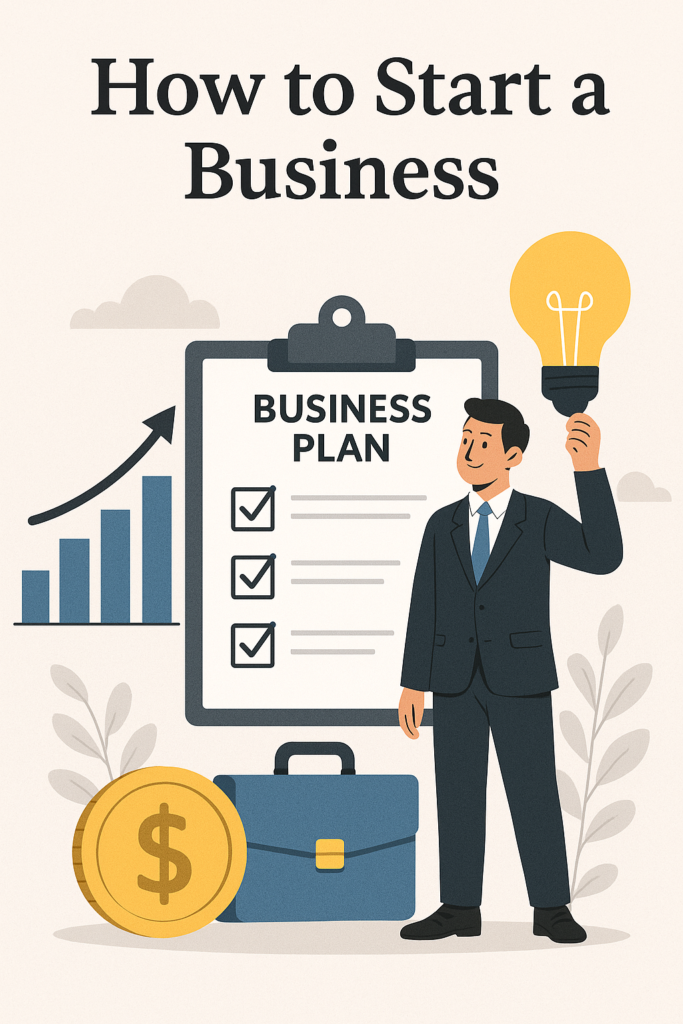In today’s fast-paced digital world, achieving financial freedom is no longer just a dream — it’s a reachable goal for many. One of the most effective ways to get there? Passive income.
Whether you’re looking to leave the 9-5 grind, earn more while you work less, or build a safety net for your future, this comprehensive guide will help you explore some of the best strategies for passive income in 2025 and beyond.

🔍 What Is Passive Income?
Passive income refers to earnings derived from ventures in which a person is not actively involved on a daily basis. Unlike traditional jobs where income is directly tied to time, passive income allows you to earn even when you’re not working.
From rental properties to digital products and dividend stocks, the opportunities are expanding as technology advances and remote work becomes mainstream.
🎯 Why You Should Focus on Passive Income
Here are some compelling reasons to consider building passive income streams:
- Time freedom: Work on your own schedule.
- Financial stability: Extra income can cushion you during tough times.
- Wealth accumulation: The rich don’t trade time for money — they invest in systems.
- Scalability: Many passive income ideas allow you to grow without significantly increasing effort.
According to a study by the IRS, the top 1% of earners in the U.S. derive over 40% of their income from passive sources like dividends, interest, and capital gains.
📌 Top Strategies for Passive Income in 2025
Let’s dive into some proven and scalable strategies for passive income.
1. 🏘️ Rental Properties
Investing in real estate remains one of the most popular passive income ideas. With platforms like Roofstock and Fundrise, even beginners can get started with minimal capital.
Pros:
- Steady monthly income
- Property appreciation
- Tax advantages
Tips:
- Start with a single-family rental
- Hire a property manager to keep it passive
- Use real estate crowdfunding for low-investment entry
2. 📈 Dividend Stocks
If you’re looking to make passive income from the financial markets, dividend-paying stocks can provide consistent returns.
Pros:
- Reliable income source
- Portfolio diversification
- Compounding returns
Best Picks (as of 2025):
- Johnson & Johnson
- Coca-Cola
- Procter & Gamble
Investing $10,000 in dividend stocks with a 4% average yield can bring in $400/year without touching the principal.
3. 🌐 Affiliate Marketing
Affiliate marketing involves promoting products and earning a commission for every sale made through your referral link. It’s one of the most accessible passive income ideas for bloggers, YouTubers, and influencers.
Pros:
- Low startup cost
- High scalability
- Evergreen income potential
Best platforms:
- Amazon Associates
- ShareASale
- Impact.com
4. 📘 Write and Sell Ebooks
Got expertise in a niche? Package your knowledge into an ebook and sell it on Amazon Kindle or your own site.
Pros:
- One-time effort, long-term reward
- Global reach
- Authority-building
Many creators are making $500–$3,000 per month on average with a single well-written ebook!
5. 🧠 Create an Online Course
Online learning is booming. Platforms like Udemy, Teachable, and Skillshare allow you to turn your skills into a course and make passive income for years.
Popular niches:
- Coding
- Digital marketing
- Fitness and nutrition
- Language learning
In 2024 alone, the e-learning market hit $400 billion globally — and it’s still growing.
6. 🎵 License Your Creative Work
Musicians, photographers, and designers can earn passive income by licensing their work.
Platforms to explore:
- Shutterstock (photos)
- AudioJungle (music)
- Envato (templates)
Once uploaded, your work can generate royalties without any further effort.
7. 💻 Develop a Mobile App or SaaS
Building a mobile app or subscription-based SaaS (software as a service) product can lead to long-term passive profits.
Even a simple utility app solving a common problem can bring in monthly recurring revenue if marketed right.
Tip: Use platforms like Bubble.io or Glide for no-code development.
8. 🪙 Invest in REITs (Real Estate Investment Trusts)
REITs allow you to invest in real estate without owning physical property. They pay dividends and are easy to buy like stocks.
Benefits:
- Diversified real estate exposure
- Low entry barrier
- Liquidity
Many REITs offer 4%–7% annual returns with less hassle than direct ownership.
9. 🖼️ Sell Print-on-Demand Products
Create designs and upload them to print-on-demand platforms like Redbubble or Merch by Amazon. Every time a customer buys a product with your design, you earn royalties.
Popular products:
- T-shirts
- Mugs
- Posters
It’s an ideal way to earn without holding inventory or managing logistics.
10. 💳 Peer-to-Peer Lending
With peer-to-peer (P2P) lending, you loan money to individuals or small businesses and earn interest on repayments.
Top platforms:
- LendingClub
- Prosper
Returns can range between 5%–10%, but it’s important to evaluate risk carefully.
🧠 Pro Tips to Make Passive Income Faster
- Automate where possible: Use tools and outsourcing to reduce effort.
- Reinvest profits: Compound your earnings to scale income over time.
- Diversify: Don’t rely on just one method — spread across multiple strategies.

